Fight City Legends: The Irish Lullaby
As anyone who has contemplated the history of pugilism already knows, no sport offers more when it comes to heartbreak and tragedy. From the trusting, dedicated warrior cheated out of his money; to the aging and once-great battler who hangs on too long; to the young, can’t-miss talent who suffers an unexpected knockout and is never the same — sad tales abound in the fight game. So it’s important to occasionally remind ourselves of the more uplifting side of the hurt business, the good news stories concerning the ones whom the boxing gods smiled upon. And there can be no question that a member of that select and fortunate group was Jimmy McLarnin, one of the greatest boxers who ever lived.
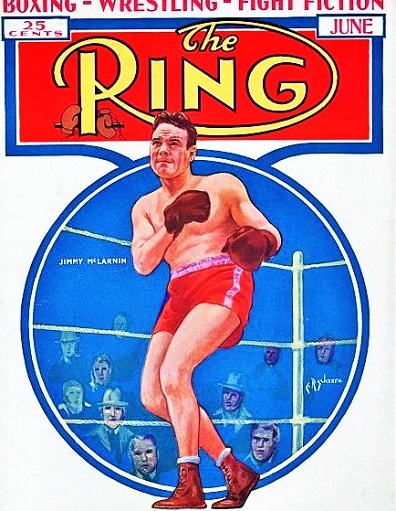
Born in Hillsborough, Ireland, Jimmy and his family emigrated to Canada when he was a young boy, settling in Vancouver where a sharp-eyed boxing man, Charles “Pop” Foster, discovered him. A friend of Jimmy’s father, Foster saw natural talent in the youngster and an improvised boxing gym was soon constructed in the backyard. With McLarnin Senior’s blessing, Foster set about teaching the youth the finer points of the trade, and before Jimmy was 16-years-old he held the amateur flyweight title of British Columbia. Shortly after, he won his first pro fight in Vancouver.
In 1924 Foster and McLarnin set out for California where some serious money could be made. Jimmy was only sixteen, but he lied about his age (hence his other famous nickname, “Babyface”) and soon found himself competing as often as once a week in Oakland and Los Angeles. A dynamic performer with fearsome power, McLarnin reeled off nineteen wins in little more than a year before taking his first defeat from future bantamweight champ Bud Taylor. Despite the loss, McLarnin then got the major break of a non-title match with reigning world flyweight champ Pancho Villa. Jimmy scored an upset decision over the great Villa (who was suffering from a major tooth infection which took his life within days of the fight) and suddenly everyone was talking about this exciting young Irish kid with a sledgehammer right hand.
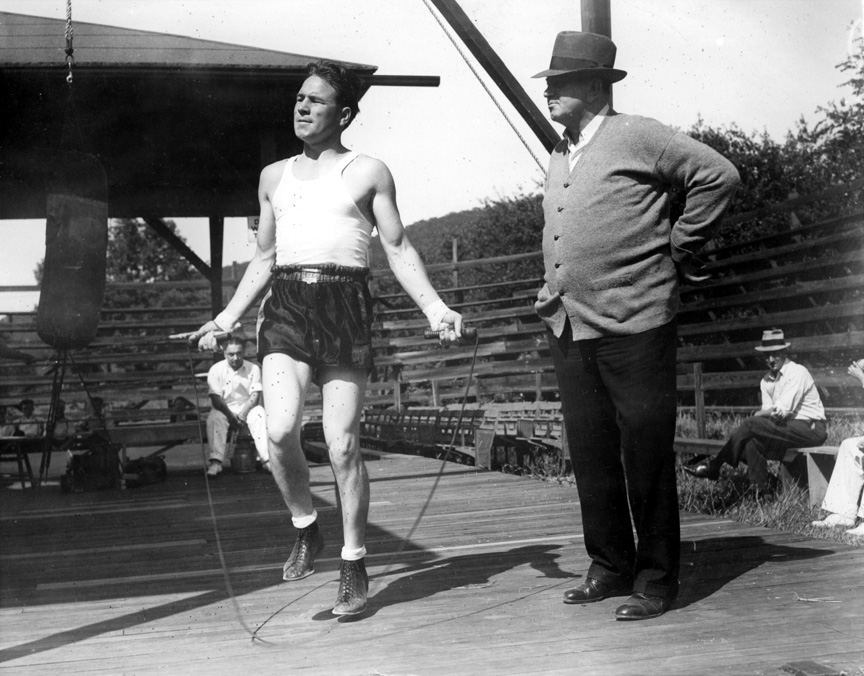
By 1928 McLarnin was a seasoned professional with a solid reputation and his debut at New York City’s Madison Square Garden attracted a huge crowd. After he knocked out ring wizard Sid Terris in the first round, McLarnin was carried aloft by the gleeful Irish-American fans who adopted him as their very own. From that night on, McLarnin was nothing less than a major attraction. He had yet to win a world title, but it didn’t matter. When Jimmy McLarnin fought, the crowds came out.
Brittle hands became a factor in Jimmy’s career soon after. He broke his right fist twice in 1930, one of those occasions being a loss to “The Fargo Express,” Billy Petrolle. But after a long rest, McLarnin came back stronger than ever, besting Petrolle twice before getting into a stretch drive towards a shot at the world title. A high profile win over an aging Benny Leonard in 1932 (which sent “The Ghetto Wizard” into retirement) only added to McLarnin’s status, and the following year he stopped the great southpaw Young Corbett III in the first round to claim the undisputed welterweight crown. It had taken almost a decade, but McLarnin was finally champion of the world. Jimmy enjoyed a well-deserved hiatus, waiting almost a full year before defending his title in the first of three highly competitive clashes with the great Barney Ross.

For the sake of historical accuracy, it must be noted that McLarnin, whose other nicknames included “The Jew Beater” and “The Hebrew Scourge” (as well as “The Murderous Mick” and “The Belfast Spider”), had his biggest, richest fights against Jewish boxers. Italians, Irishmen, Jews, Latins, Poles — ethnic matches were guaranteed money-makers at that time as each fighter’s respective contingents would turn out in droves to cheer their hero on. After Benny Leonard, the best-loved Jewish pugilist was the extremely tough and cagey Ross, and in the middle of the Great Depression a mob of sixty thousand flooded the stands of the Madison Square Garden Bowl to see the first of three hard-fought, championship battles between McLarnin and Ross, one of the all-time great trilogies. All three fights went the distance and two of the three were split-decisions. Ross took the first before McLarnin came back to regain his title four months later. A third duel, also razor close, went Ross’s way.
By this time, McLarnin and Foster had achieved all of their goals. Jimmy had won world titles and a huge pile of cash which, it must be noted, was not squandered on high living or a huge entourage, but instead shrewdly invested. He fought just three more times, splitting two with the great Tony Canzoneri, and then winning a ten round decision over lightweight champ Lou Ambers. With victories over the trio of Ross, Canzoneri and Ambers, there is no disputing McLarnin’s status as, pound-for-pound, an all-time great.
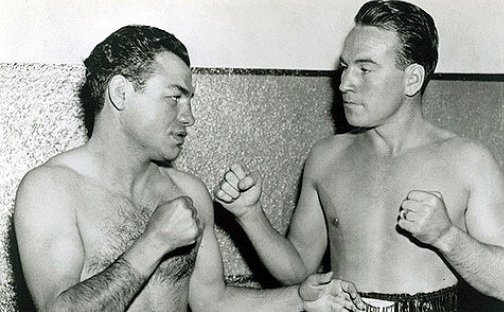
There’s also no disputing the wisdom in McLarnin’s next career move: he retired. Just thirty-one years of age, with likely at least two or three more good years left, he walked away from the fight game, still strongly in possession of both all his ring earnings and his good health. And while lucrative offers to lace ’em up again came his way, he turned them down and never again stepped through the ropes. Instead he opened up a successful machine shop, pursued golf and acting, hobnobbed with various Hollywood celebrities, and raised a family. By all reports he was completely content in his after-boxing life; he lived to be 92 years of age, and passed on a considerable fortune to his children and grand-children. It’s the kind of story we don’t hear often enough in boxing: a happy one, with a happy ending. — Michael Carbert

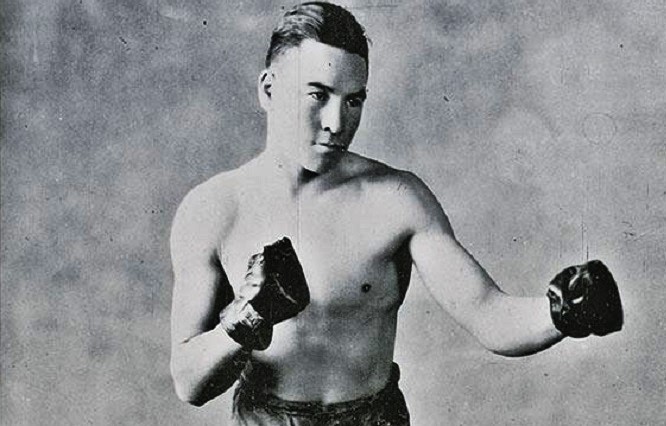

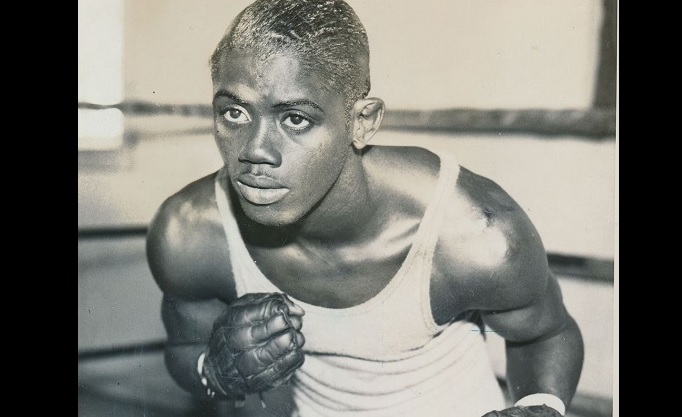

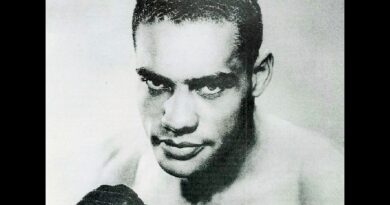
Thank you for this Mr. Carbert! I saw that destiny video awhile back and thought to myself there’s no way that this video is left out. One of the greatest trilogies ever that hardly few know about. We are almost 100 years removed from the Golden Age of boxing. It is only fitting that we pay tribute and honor those men who loved this sport for what it is. A true test of mental, physical, and spiritual strength by all standards.
Thanks for reading, Rome, and I agree, it’s important to pay tribute to the best boxers from decades past.
Ike Weir was the Belfast Spider
Great piece, Michael!
I like the fact that he was a positive guy after he retired, golfing, involved with his family. Sounds like a home run to me